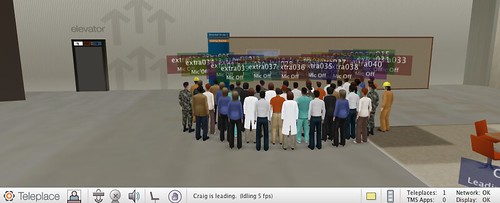Real situation rooms devote an awful lot to physical requirements.
Here’s a virtual situation room from Forterra’s Olive platform, where there is lot more emphasis on dealing with the situation.
Of course, a real operations center needs to control and interact with the physical world, pulling in not just media, but also manifestations of live data. And the participants must be able to take actions that effect the real world. See an older video of a Teleplace network operations center doing that here.
If virtualization can produce an effective result for much less money, why not apply it in business as well as government? Here’s an example from industry analysts at Think Balm.
Physical situation rooms have costly recording equipment and people to operate them. This is an area where virtual situation rooms can not only be cheaper, but better because easier-to-use means more-likely-to-happen.
Of course, the point of a situation room is to bring experts and stakeholders together to deal with a changing situation. All the participants need to be able to quickly interact with resources, without physical or technological limitation. Unlike the set-in-concrete behemoths, a virtual environment can do better than bunkers to facilitate brainstorming and bringing new ideas together.




